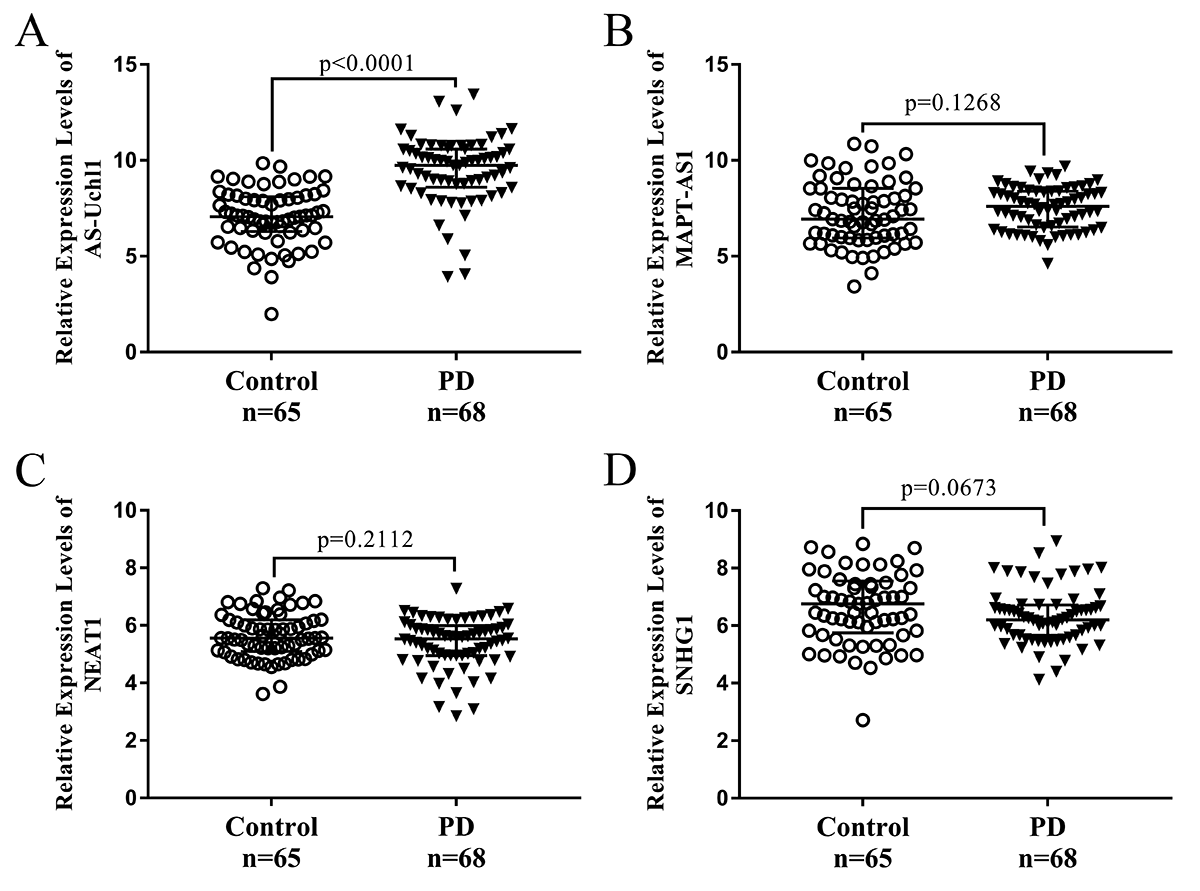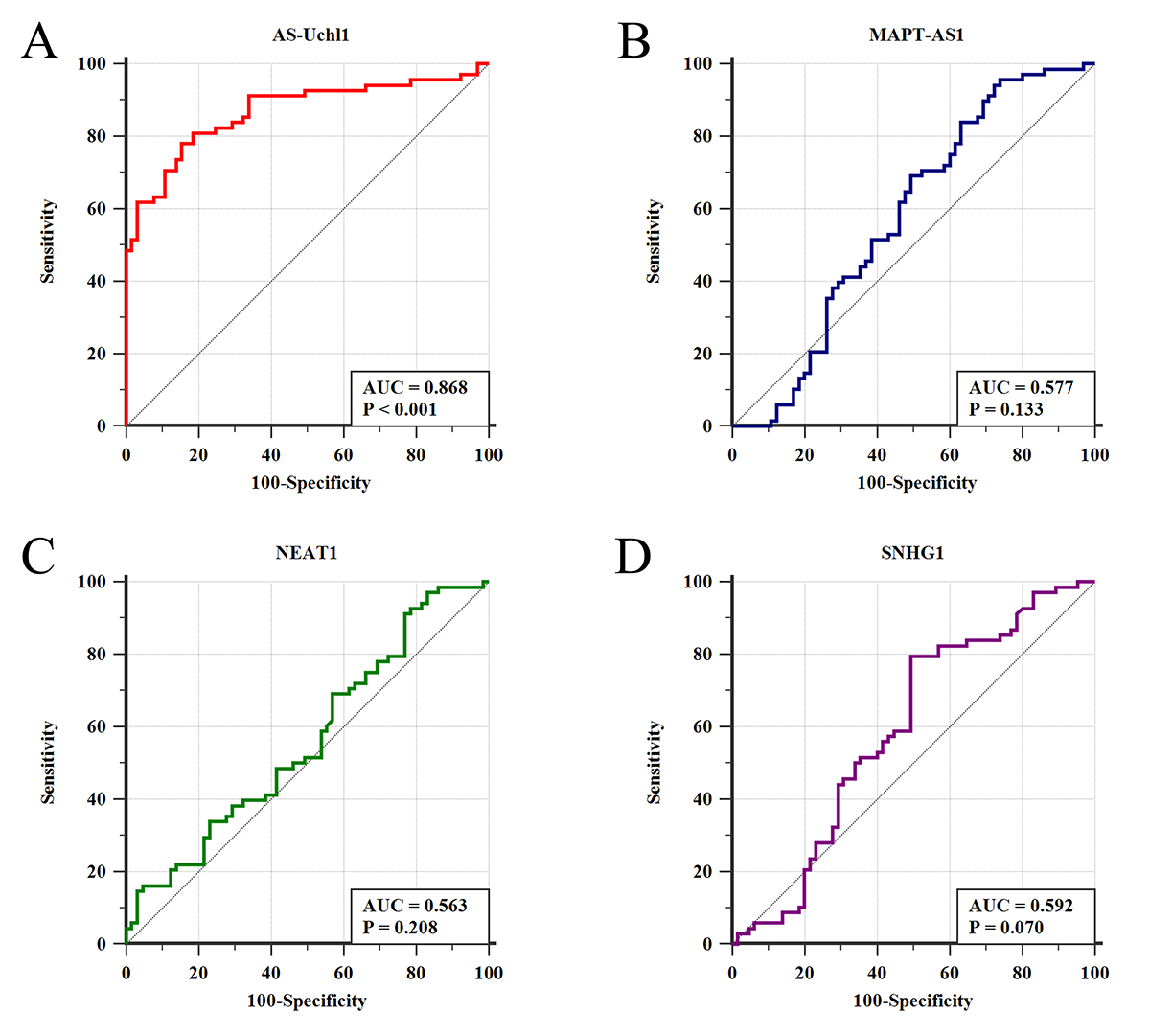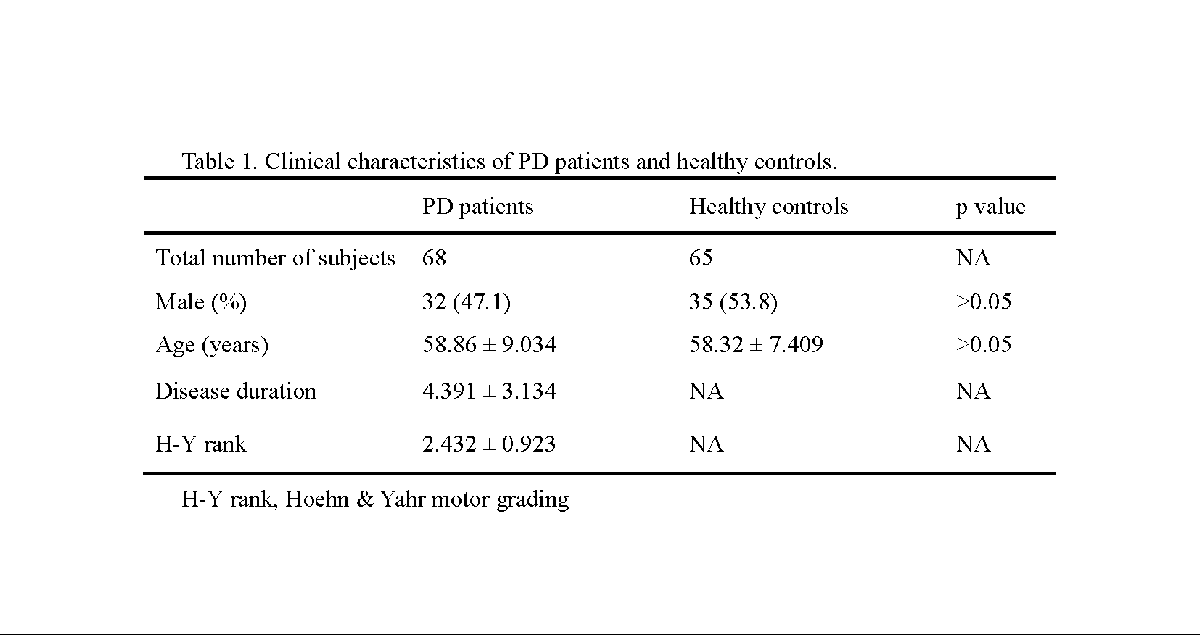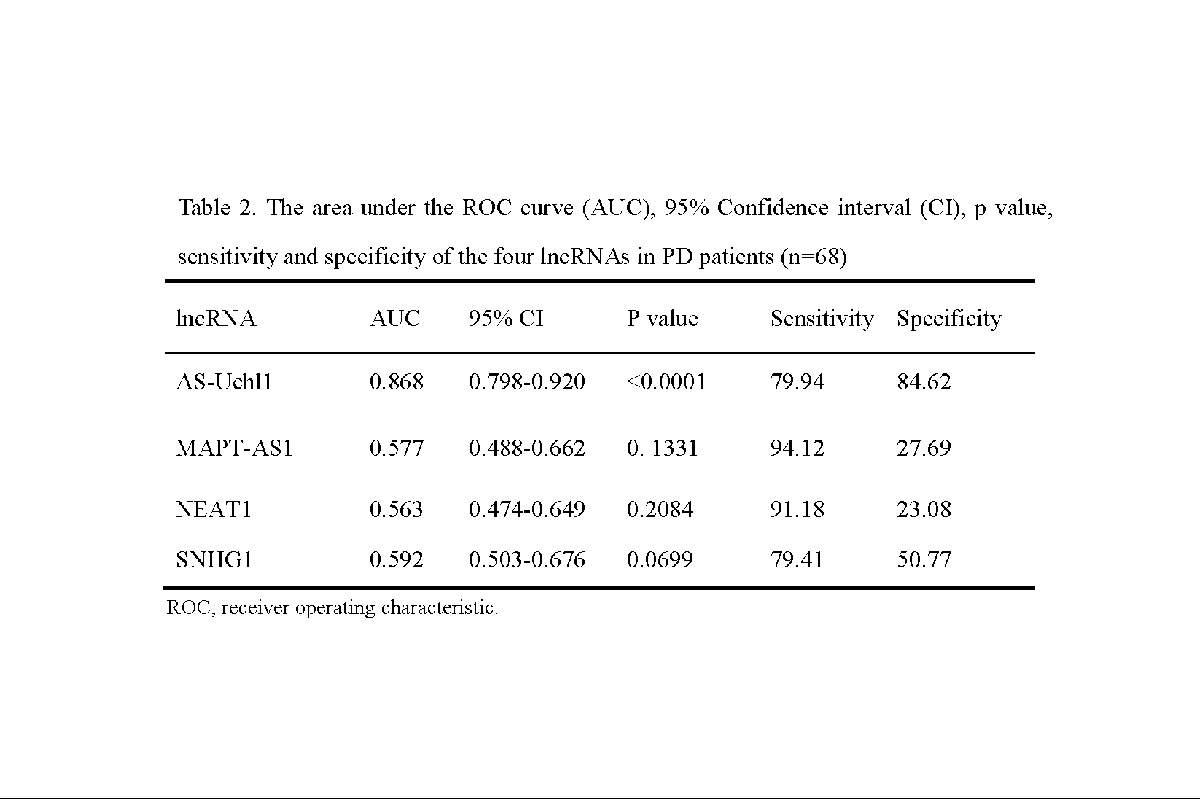Session Information
Date: Tuesday, September 24, 2019
Session Title: Parkinsonisms and Parkinson-Plus
Session Time: 1:45pm-3:15pm
Location: Agora 3 West, Level 3
Objective: The study aimed to validate plasma-based circulating long non-coding RNA (lncRNA) as biomarker for the diagnosis of Parkinson’s disease (PD).
Background: Parkinson’s disease (PD) is the second most common neurodegenerative disease following Alzheimer’s disease. The diagnosis of PD is still primary dependent on subjective clinical rating scales that are related with motor symptoms, which make molecular biomarkers that are objective and quantifiable attractive. It has been reported that lncRNA was involved in the pathogenesis of PD. However, whether lncRNA can serve as a diagnostic biomarker for PD remains unclear.
Method: Here, basing on the results of other investigations [1-5], we selected four specific lncRNAs (AS-Uchl1, MAPT-AS1, NEAT1, SNHG1) as candidate PD biomarker. Quantitative PCR was performed to detect the lncRNA expression of plasm of PD patients (n=68) and age, sex-matched healthy controls (n=65). Receiver operating characteristic curve (ROC) analysis was applied to explore the potential of lncRNA as a biomarker for PD.
Results: Clinical characteristics of all subjects in the study were summarized in table 1.We found that the plasma-based circulating lncRNA AS-Uchl1 was significantly down-regulated in PD patients compared to healthy controls, while lncRNA MAPT-AS1, NEAT1, SNHG1 demonstrated no significant difference between two groups (figure 1). ROC curve analysis showed that lncRNA AS-Uchl1 was the best candidate of the four lncRNA (figure 2, table 2).
Conclusion: Our present study identified the four specific lncRNA expression level in plasm between PD patients and healthy controls. We found that lncRNA AS-Uchl1 is decreased in the plasma of PD patients and has high specificity (84.62) for PD, which indicated that AS-Uchl1 may be a potential candidate biomarker for PD diagnosis.
References: 1. Liu Y, Lu Z. Long non-coding RNA NEAT1 mediates the toxic of Parkinson’s disease induced by MPTP/MPP+ via regulation of gene expression. Clinical and experimental pharmacology & physiology 2018; 45(8): 841-8. 2. Cao B, Wang T, Qu Q, Kang T, Yang Q. Long Noncoding RNA SNHG1 Promotes Neuroinflammation in Parkinson’s Disease via Regulating miR-7/NLRP3 Pathway. Neuroscience 2018; 388: 118-27. 3. Kraus TF, Haider M, Spanner J, Steinmaurer M, Dietinger V, Kretzschmar HA. Altered Long Noncoding RNA Expression Precedes the Course of Parkinson’s Disease-a Preliminary Report. Mol Neurobiol 619 2017; 54(4): 2869-77. 4. Coupland KG, Kim WS, Halliday GM, Hallupp M, Dobson-Stone C, Kwok JB. Role of the Long Non-Coding RNA MAPT-AS1 in Regulation of Microtubule Associated Protein Tau (MAPT) Expression in Parkinson’s Disease. PLoS One 2806 2016; 11(6): e0157924. 5. Carrieri C, Forrest ARR, Santoro C, et al. Expression analysis of the long non-coding RNA antisense to Uchl1 (AS Uchl1) during dopaminergic cells’ differentiation in vitro and in neurochemical models of Parkinson’s disease. Frontiers in Cellular Neuroscience 46 2015 2016.12.26 9.
To cite this abstract in AMA style:
Y. Fan, Z. Xue. Plasma-based circulating long non-coding RNA AS-Uch1 as a novel diagnostic biomarker for Parkinson’s disease [abstract]. Mov Disord. 2019; 34 (suppl 2). https://www.mdsabstracts.org/abstract/plasma-based-circulating-long-non-coding-rna-as-uch1-as-a-novel-diagnostic-biomarker-for-parkinsons-disease/. Accessed April 26, 2025.« Back to 2019 International Congress
MDS Abstracts - https://www.mdsabstracts.org/abstract/plasma-based-circulating-long-non-coding-rna-as-uch1-as-a-novel-diagnostic-biomarker-for-parkinsons-disease/




